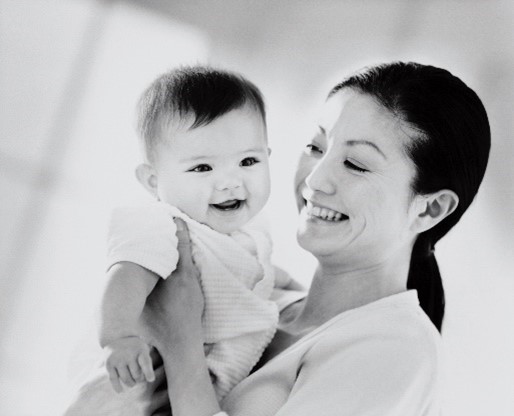About 295,000 women worldwide died during and following pregnancy and childbirth in 2017.1 The vast majority of these deaths - 94% - occurred in low-resource settings, particularly Sub-Saharan Africa and Southern Asia. But maternal morbidity and mortality are a problem in the Western world as well. In fact, the U.S. has the highest maternal mortality rate among developed countries.2
 Pregnancy-related complications take the lives of approximately 700 people in the U.S. each year. 3 What’s more, for every American woman who dies from childbirth, 70 nearly die from conditions including cardiac issues, hysterectomy and kidney problems.4 In addition to medical issues, treatment for these complications can become an ongoing financial and emotional burden.
Pregnancy-related complications take the lives of approximately 700 people in the U.S. each year. 3 What’s more, for every American woman who dies from childbirth, 70 nearly die from conditions including cardiac issues, hysterectomy and kidney problems.4 In addition to medical issues, treatment for these complications can become an ongoing financial and emotional burden.
Major complications that account for nearly 75% of all maternal deaths5 include:
- Severe bleeding (mostly after childbirth).
- Infections (usually after childbirth).
- High blood pressure during pregnancy (pre-eclampsia and eclampsia).
- Complications from delivery.
- Unsafe abortion.
Rates of hypertension during pregnancy are increasing globally6, which also increases the risks for complications for the offspring, such as preterm delivery, small for gestational age and low birthweight. Among high-income countries, the United States has one of the highest hypertensive-related maternal mortality rates. Cardiovascular disease, which includes stroke and heart failure, now accounts for up to half of all maternal deaths in the U.S, and pregnancy-related stroke hospitalizations increased more than 60% from 1994 to 2011.
Mental health
Maternal health cannot be promoted without addressing maternal mental health conditions, including substance use disorders. Among 421 pregnancy-related deaths in the U.S. reported by 14 state Maternal Mortality Review Committees in the U.S. from 2008-2017, 11% were due to mental health conditions.7 Nearly three-quarters of people with a pregnancy-related mental health cause of death had a history of depression, and more than two-thirds had past or current substance use.
Violence
Pregnant women are also at risk of violence.8 In the United States pregnant women die by homicide more often than they die of pregnancy-related causes — and they're frequently killed by a partner. Researchers found that U.S. women who are pregnant or were pregnant in the prior 42 days (the postpartum period) die by homicide at more than twice the rate that they die of bleeding or placental disorders — the leading causes of what are usually classified as pregnancy-related deaths.
Postpartum care
The weeks following birth are a critical period for a woman and her infant.9 She is recovering from childbirth, adjusting to changing hormones, and learning to feed and care for her newborn. In addition, she may be dealing with lack of sleep, fatigue, pain, breastfeeding difficulties, stress, new onset or exacerbation of mental health disorders, lack of sexual desire, and urinary incontinence. Women also may need to navigate preexisting health and social issues, such as substance dependence or intimate partner violence.
Women with pregnancies complicated by preterm birth, gestational diabetes or hypertensive disorders of pregnancy should be counseled that these disorders are associated with a higher lifetime risk of maternal cardiometabolic disease. These women should undergo risk assessment for future arteriosclerotic cardiovascular disease.
Socioeconomics
The high number of maternal deaths in some areas of the world reflects inequalities in access to quality health services and highlights the gap between rich and poor. The maternal mortality ratio (the number of maternal deaths per 100,000 live births) in low-income countries in 2017 was 462 vs. 11 in high income countries.10 It is also true that women in less developed countries have, on average, more pregnancies than women in developed countries, increasing their lifetime risk of death due to pregnancy.
Inequalities in maternal mortality rates exist in well-developed countries as well. In the United States, non-Hispanic Black women experience maternal deaths at three to four times that of non-Hispanic white women.11 The risk of maternal mortality among Black women persists after controlling for socioeconomic status.
In the United Kingdom, gaps in mortality rates remain between women from deprived and affluent areas, women of different ages, and women from different ethnic groups.12 One report shows that women from Black ethnic groups are four times more likely to die in pregnancy than women from White groups, and women from Asian ethnic backgrounds are almost twice as likely to die in pregnancy compared to White women. Women living in the most deprived areas are twice as likely to die than those who live in the most affluent areas.
Progress? Yes ... and no
Despite the sobering statistics, progress is occurring. Globally, maternal mortality declined by more than a third from 2000 to 2017.13 Southern Asia achieved the greatest overall reduction in maternal mortality rate (MMR) -- a decline of nearly 60%, from 384 to 157.14 Despite its very high MMR in 2017, sub-Saharan Africa achieved a reduction of nearly 40% since 2000. And in the United Kingdom, maternal mortality per 100,000 maternities declined from 13.9 in 2003-2005 to 9.71 in 2016-2018.15
But the United States is lagging. In 2019, 754 women were identified as having died of maternal causes in the United States, compared with 658 in 2018.16 Expressed as maternal mortality rate, MMR in 2019 was 20.1 deaths per 100,000 live births, significantly higher than the MMR for 2018.(17.4)
Between 1993 and 2014, the rate of U.S. women nearly dying from childbirth almost tripled.17 To help explain those statistics, experts point to risk factors that have increased in recent years: American women are giving birth at older ages and are more likely to have problematic conditions like obesity, high blood pressure and diabetes.
Solutions exist, though they are not being implemented evenly across the globe.
For example, the World Health Organization recommends midwives as an approach to reducing maternal mortality. Several systematic reviews have found that midwifery-led care for women with healthy pregnancies is comparable or preferable to physician-led care.18 Yet in the U.S., obstetrician-gynecologists (ob-gyns) are overrepresented in its maternity care workforce relative to midwives, and there is an overall shortage of maternity care providers (both ob-gyns and midwives) relative to births. In most other countries, midwives outnumber ob-gyns by severalfold, and primary care plays a central role in the health system.
In addition, studies have demonstrated that home management, including remote self-monitoring, is feasible and safe in terms of maternal and fetal outcomes for intermediate- and high-risk pregnant women.19 Yet the U.S. fails to guarantee access to provider home visits or paid parental leave in the postpartum period.20
- Maternal Mortality – World Health Organization
- Maternal Mortality and Maternity Care in the United States Compared to 10 Other Developed Countries – The Commonwealth Fund
- Preventing Pregnancy-Related Mental Health Deaths: Insights From 14 US Maternal Mortality Review Committees, 2008-17 – Health Affairs
- For Every Woman Who Dies In Childbirth in the U.S., 70 More Come Close – NPR
- Maternal Mortality – World Health Organization
- High blood pressure treatment in pregnancy is safe, prevents maternal heart risks-American Heart Association Scientific Statement
- Preventing Pregnancy-Related Mental Health Deaths: Insights From 14 US Maternal Mortality Review Committees, 2008-17 – Health Affairs
- Homicide is a top cause of maternal death in the United States-Nature
- Optimizing Postpartum Care-American College of Obstetrics and Gynecology Committee Opinion
- Maternal Mortality – World Health Organization
- Racial Disparities in Maternal Mortality in the United States: The Postpartum Period Is a Missed Opportunity for Action-American College of Obstetricians and Gynecologists ACOG Postpartum Toolkit
- Saving Lives, Improving Mothers’ Care Lay Summary 2021-MBRRACE-UK
- New global targets to prevent maternal deaths-World Health Organization
- Maternal Mortality – World Health Organization
- Indicator 2.1.1 Maternal mortality ratio-Sustainable Development Goals, United Nations
- Maternal Mortality Rates in the United States, 2019-Centers for Disease Control and Prevention
- For Every Woman Who Dies In Childbirth in the U.S., 70 More Come Close – NPR
- Maternal Mortality and Maternity Care in the United States Compared to 10 Other Developed Countries – The Commonwealth Fund
- Home, Self-Monitoring Feasible for Higher-Risk Pregnancies-HealthDay
- .Maternal Mortality and Maternity Care in the United States Compared to 10 Other Developed Countries – The Commonwealth Fund



Share Article